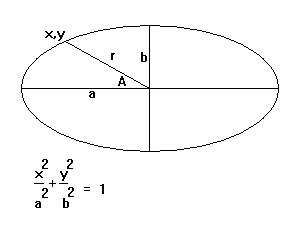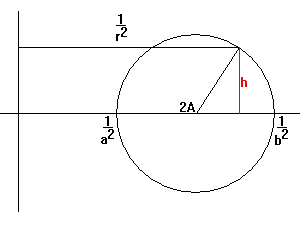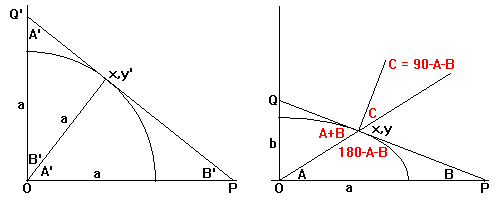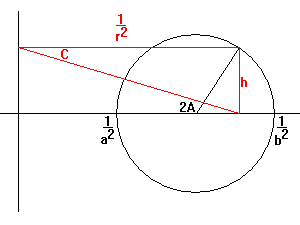Mohr Circles and Finite Strain
Steven Dutch, Professor Emeritus, Natural and Applied Sciences, University of Wisconsin - Green Bay
For general comments on Mohr Circles and ellipses, see Mohr Circles and Conic Sections
Finite strain is strain that is more than a few per cent. It means we have to regard deformed circles as true ellipses, and cannot make use of certain mathematical approximations that are useful for very small (usually elastic) strains.
 |
 |
At left, we have an originally circular object (a reduction spot, say) deformed into an ellipse. At right is the Mohr Circle corresponding to the ellipse. The usual rules for measuring angles on Mohr Circles apply, so we can see that:
|
|
 |
|
| Shear is a bit more complicated when dealing with finite strain. In its original state (left) the radius of a circle is always perpendicular to the tangent. If the circle is strained (right), the radius is no longer perpendicular to the tangent. The change in angle C is a measure of shear. After a certain amount of trig manipulation, we can show that:
Tan C = [r2 (1/b2 - 1/a2)/2]Sin 2A where r is the radius of the ellipse. |
|
 |
It turns out that [ (1/b2 - 1/a2)/2]Sin 2A is simply the vertical coordinate h at left.
So: h = Tan C/r2 = (1/r2)Tan C. Writing it this way allows us to see that the geometrical relationship at left must hold. |
Mohr Circle constructions for finite strain aren't used very much to calculate dimensions or shear since it's usually just as easy, and more clear, to work directly from the ellipse. Where they are most frequently used is situations where deformation in several directions is known, but not the principal axes of the strain ellipse. Then Mohr Circles are an effective way of finding maximum and minimum deformation and their directions.
Return to Course Syllabus
Return to Techniques Manual Index
Return to Professor Dutch's Home Page
Created 29 November 2000, Last Update 1 December 2000